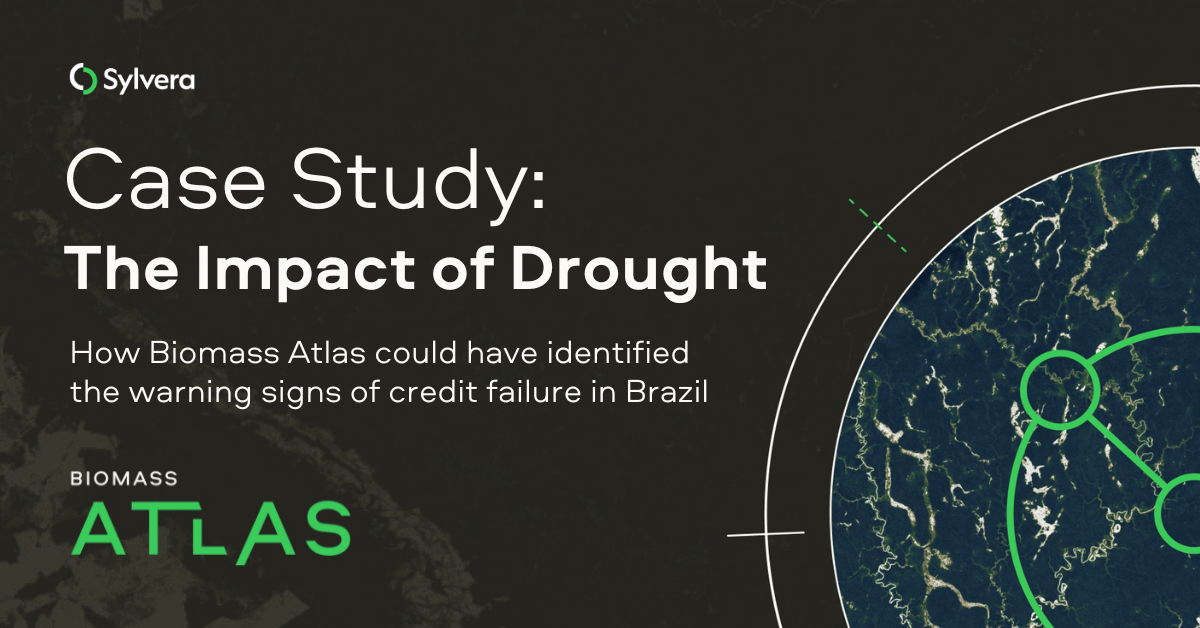“Over the years we’ve invested significantly in our field data team - focusing on producing trusted ratings. While this ensures the accuracy of our Ratings, it doesn’t allow the scale across the thousands of projects that buyers are considering.”
For more information on carbon credit procurement trends, read our "Key Takeaways for 2025" article. We share five, data-backed tips to improve your procurement strategy.

One more thing: Connect to Supply customers also get access to the rest of Sylvera's tools. That means you can easily see project ratings and evaluate an individual project's strengths, procure quality carbon credits, and even monitor project activity (particularly if you’ve invested at the pre-issuance stage.)
Book a free demo of Sylvera to see our platform's procurement and reporting features in action.
As buyers increasingly look to diversify their offsets, and demand greater assurances of performance, Sylvera is putting satellite data, machine learning and rigorous methodologies to work to monitor and analyse the world's nature-based offsetting projects.
So far our focus has been on tropical forests, but we’re excited to share something new. We recently completed the analysis of our first drylands projects in Africa; these projects are designed to protect a specific and very important natural habitat.
What are Drylands?
The term ‘drylands’ describes a huge range of ecosystems - desert, savanna, shrubland, grassland, woodland, and mixed terrain. They all have one thing in common: lack of water. Drylands cover around 40% of the Earth's surface; an area that’s projected to increase by up to 23% by the end of this century.

Why is it so important to protect drylands?
With their extreme temperatures and sparse plant cover, dryland regions are hostile environments. But they’re also vulnerable. In many regions, unsustainable farming practices are degrading the soil and causing serious long-term damage to these finely balanced ecosystems, leaving them unable to support life and losing their ability to remove carbon from the atmosphere.
The good news is that there are more and more projects underway to change this. Earlier this year, we began work to rate REDD+ drylands projects in Kenya, Zambia and Zimbabwe to see how well they were performing in terms of storing carbon.
Forests - but not as we know them.
Dryland forests are very different from the tropical forests that we’ve analysed so far, in two key ways:
1. Lower carbon count: Dryland forests have significantly less carbon per square kilometre than rainforests, making carbon quantification difficult.
2. Seasonality: Trees in drylands often lose their leaves in dry or cool seasons, so they appear invisible in optical satellite images.
Because of these differences, our usual methodology didn’t give accurate results. We had to develop a new way of assessing dryland landscapes. Challenge accepted!
A completely new approach
Simon Anderson, our lead Geospatial expert on the project explains how we tackled the problem:
"The Radar data from the PALSAR sensor on Japan’s ALOS satellite was the perfect choice for this challenge because it detects carbon with a high degree of accuracy - even in low densities, it’s particularly sensitive to woody biomass in dry areas, and scans through cloud cover."
How we did it
Working with data provided by JAXA (Japanese Space Exploration Agency), our analysts used mosaics created from thousands of radar images to produce maps of each project area going back as far as 2007. We then ran the new machine learning prototypes we'd developed specifically for drylands to assess change over time.
The FAO Global Drylands Assessment data was an invaluable independent resource, helping us define the performance benchmarks for the projects.
Of course, this accurate, regularly updated, radar-based analysis was just the beginning. As always, our expert ratings and data team brought their extensive knowledge to the task. With expertise drawn from ratings, finance and banking, the team used the quantitative geospatial analysis to generate a full carbon accounting model.
This was combined with our rigorous qualitative assessment methodology to produce a final market-facing rating for each project. And we’re delighted to announce that this week, the ratings and deep-dive analysis for Kasigau, Kariba and Chyulu Hills projects are available in the Sylvera platform.

Exceptional co-benefits
These projects have had a really positive impact on local communities too. In fact, 2 out of the 3 projects achieved our top 5/5 score for co-benefits, with great community and biodiversity credentials including new healthcare and education facilities, and new jobs in forestry and ecotourism.
These regions are also now home to many IUCN critically endangered species including the African elephant, lion, cheetah, lesser kudu, black rhino, and flora species such as the Red Stinkwood and the Afrocarpus. Reforestation provides important biodiversity corridors for wildlife to move between the surrounding Kenyan national parks.
Where we’re going next
This is a great example of how we’ve been able to adapt and diversify our assessment models within our standardized. It keeps our project ratings accurate and accountable while expanding the breadth of ratings available to customers.
I’m really excited by how fast our project library is evolving and growing. We’ve got five more drylands assessments in the pipeline, and you’ll start seeing these in the platform in the next few weeks. We’re looking forward to assessing more drylands projects and contributing to the protection - and regeneration - of this important global landscape.
If you're looking for deeper insights into drylands or other nature-based projects, get in touch and discover the power of offset insights from Sylvera.















